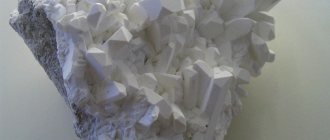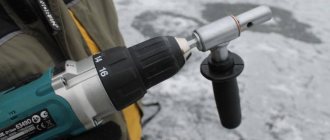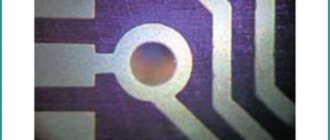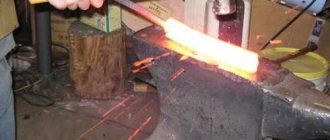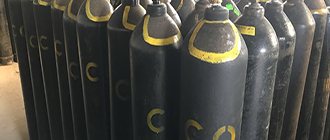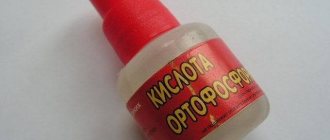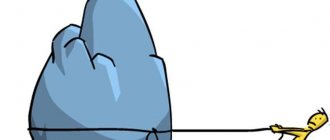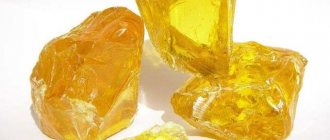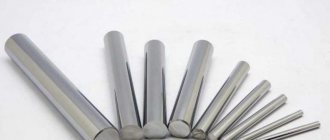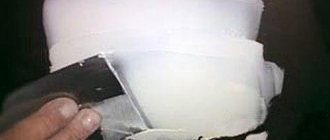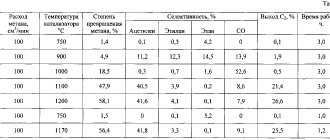| Sodium tetraborate | |
| Are common | |
| Traditional names | borax, borax |
| Chem. formula | 247 |
| Physical properties | |
| State | crystals |
| Molar mass | 201.22 g/mol |
| Density | 2.37 ± 0.01 g/cm³ |
| Thermal properties | |
| Temperature | |
| • melting | 664 °C (β-modification) 710 °C (γ-modification) |
| • boiling | 1575 °C |
| • decomposition | 2867 ± 1 ℉[1] |
| Steam pressure | 0 ± 1 mmHg[1] |
| Chemical properties | |
| Solubility | |
| • in water | 3.2 g/100 ml (25 °C) 10.5 g/100 ml (50 °C) |
| • in ethanol | 0.05 g/100 ml |
| • in acetone | 0.006 g/100 ml |
| Classification | |
| PubChem | 10219853 |
| SMILES | [Na+].[Na+].[O-]B1OB2OB([O-])OB(O1)O2.OOOOOOOOOO |
| InChI | InChI=1S/B4O7.2Na/c5-1-7-3-9-2(6)10-4(8-1)11-3;;/q-2;2*+1 UQGFMSUEHSUPRD-UHFFFAOYSA-N |
| ex Alimentarius | E285 |
| RTECS | VZ2275000 and ED4588000 |
| ChemSpider | 8395345 |
| Safety | |
| NFPA 704 | 0 1 0 |
| Data given is based on standard conditions (25 °C, 100 kPa) unless otherwise stated. | |
| Media files on Wikimedia Commons | |
Sodium tetraborate
(“borax”, “borax” (from Latin borax), sodium tetraborate) is an inorganic compound, sodium salt of boric acid with chemical formula 247, the most common and used boron compound, forms several crystalline hydrates, and is widely used in industry.
Application[ | ]
Sodium tetraborate is used:
- as a raw material for the production of boric acid and various boron compounds[2];
- in the production of enamels, glazes, optical and colored glasses, various ceramics[2];
- when soldering and melting metals containing flux[2];
- When forging metals;
- in the paper and pharmaceutical industries;
- in the production of building materials as an antiseptic component for the production of cellulose insulation "Ecowool"
- as a disinfectant and preservative[2];
- for preparing buffer solutions;
- in analytical chemistry: as a standard substance for determining the concentration of acid solutions;
- for qualitative determination of metal oxides (by the color of pearls);
In 1977, global production of sodium tetraborate was 1.5 million tons[2].
Toxicological properties and characteristics
Warm-blooded animals and humans . Sodium tetraborate penetrates the skin and has a mild cumulative effect. Does not have a local irritant effect upon contact with the conjunctiva of the eye and skin, does not cause a sensitization effect or an embryotoxic effect. [2]
People who work with the substance often suffer from chronic eczema. When working, it is necessary to protect the respiratory system, eyes and skin from exposure to dust. [3]
Sodium tetraborate, as well as boric acid and soluble borates, are quickly and almost completely absorbed from the gastrointestinal tract. In the blood, boron is evenly distributed between red blood cells and plasma, but quickly passes into the tissues. Found in soft tissues
10% of the dose (mainly in the brain, liver and adipose tissue). The excretion of boron compounds occurs mainly through the gastrointestinal tract. [3]
Hazard classes . Insecticides based on sodium tetraborate belong to class IV of low-hazard disinfestation agents according to GOST 12.1.007. [2]
Being in nature[ | ]
There are numerous minerals containing sodium tetraborate. These include:
- borax (borax, tinkal) - mineral composition 247·10H2O - sodium tetraborate decahydrate;
- kernite - sodium tetraborate tetrahydrate - Na2B4O7 4H2O;
- numerous minerals of the borate class, which in addition to sodium and boron oxides contain other metals - calcium, magnesium, iron, etc.;
- Sodium tetraborate crystalline hydrates precipitate when some endorheic, seasonally dry salt lakes dry up, such as Lake Searles, located in the Mojave Desert in the United States, and some lakes in Turkey.
Receipt
The substance is obtained by recrystallization of natural borax or kernite (tetrahydrate); interaction of boric acid with sodium carbonate; interaction of natural borates with sodium carbonate and bicarbonate when heated. [5]
Borax (sodium tetraborate) is the sodium salt of boric acid with the formula Na2B4O7. This compound has found wide application, forming variants of crystalline hydrates (crystalline type structure).
In the Asian region the substance is called "tinkal". It is believed that the ingredient got its name from the Persian word for "brown", which was used to name potassium nitrate and other fluxes containing water.
In Ancient Egypt, borax was used to preserve Mummies. Additionally, borax is used to make the glaze of pottery in China, and as a cleaning agent in several places in the Middle East and China.
The substance gained widespread use in the Middle Ages in Europe as a flux for soldering and cleaning the surfaces of metal workpieces. The nature of the origin of the substance has been a long mystery for chemists. Traces of the powder's history were eventually traced to Tibet, almost the only source that was known before the discovery (1776) and application (1820) of boric acid from Italian sources. Italy became the main source of borax until the 1860s, when the desert regions of Chile also began to supply borax for widespread use.
Read also: Preamplifier for electret microphone
A key figure in the discovery of the ingredient in North America was John A. Veatch, who found it in California in 1856, first in the spring at the northern end of the Sacramento Valley (Tehama County). Over the next decade, borax deposits were found in more exploitable locations in Nevada and Southern California.
American manufacturers mastered the process of using borax by the mid-1880s and supplied the product to domestic and international markets. The price fell to a level that caused the majority to refuse to use the production of such a product. Stephen Mather, to promote the substance in 1896, published a brochure: “Recipes for the Use of Borax.” This successful advertising campaign greatly expanded the demand for borax, which became relatively inexpensive, especially in laundry detergents and glass and ceramic glazes.
Literature[ | ]
- Almedingen A. N.
Bura, its falsification // Encyclopedic Dictionary of Brockhaus and Efron: in 86 volumes (82 volumes and 4 additional). - St. Petersburg, 1890-1907. - Herzenstein G. M.
Bura, in medicine // Encyclopedic Dictionary of Brockhaus and Efron: in 86 volumes (82 volumes and 4 additional). - St. Petersburg, 1890-1907. - Sodium tetraborate // Photocinema technology: Encyclopedia / Ch. ed. E. A. Iofis. - M.: Soviet Encyclopedia, 1981. - P. 204. - 447 p.
- Levinson-Lessing F. Yu.
Bura, being in nature // Encyclopedic Dictionary of Brockhaus and Efron: in 86 volumes (82 volumes and 4 additional). - St. Petersburg, 1890-1907. - Fedorov P.I.
Sodium borates // Chemical Encyclopedia: in 5 volumes / Ch. ed. I. L. Knunyants. - M.: Great Russian Encyclopedia, 1992. - T. 3: Copper-Polymer. — P. 180-181. — 639 p. — 48,000 copies. — ISBN 5-85270-039-8.
Composition and physicochemical properties
| Preparative form |
Borax is a compound of soda and boric acid. This substance does not dissolve in alcohols, but forms solutions well with hot water and glycerin.
Molecular structure of sodium tetraborate
Borax reacts with strong acids to form a salt and boric acid. When heated above 400 °C, the substance is completely deprived of water in the crystals. Borax, as a salt of a weak acid, when mixed with water, creates an alkaline reaction with sodium tetraborate. Borax can react with certain metal oxides to form various compounds - borax pearls.
As a food preservative, borax is prohibited for use in most countries, including Russia, due to the inability of the substance to be removed from human organs as a toxic ingredient. As a food additive, the material is called E-285.
Chemical reactions involving borax
Scope of application of the drill
Sodium tetraborate has been actively used for the following purposes:
- as a flux during soldering and melting of metals;
- in analytical chemistry studies as a standard substance for determining the level of acid in a solution. Borax is also used to establish the characteristics of metal oxides;
- widespread use in the creation of glazes, enamel, glasses for optical instruments and decoration;
- the powder is used in pharmaceuticals and paper production;
- is a natural preservative and means for disinfection and control of parasites;
- is a component in the chemical industry to create household cleaning products;
- relevant application in the creation of cosmetic products;
- borax is used as a base for creating boron;
- the substance is a component for creating insulating building materials;
- in light industry, sodium tetraborate is applied to the product before the painting procedure.
Using a drill in everyday life
Borax can be found in most grocery stores. It is a relatively inexpensive product, making it an excellent choice for many household projects.
Use of sodium tetraborate as a medicine
The substance is very effective in controlling pests: cockroaches, ants and other household insects. The mixture is ready by mixing equal parts of powder with sugar. Sugar helps attract beetles and borax exerts its detrimental effect on the insect. It is recommended to keep the substance in hard-to-reach places, away from pets and children. Optimal places: under stoves, refrigerator and sink. Borax also works well against mice. You just have to apply the powder in the areas where the mice are located, and the borax will rid you of the pests. You can also sprinkle the solution on the carpet and vacuum it to eliminate the presence of fleas or treat the mattress to get rid of bedbugs.
Read also: Three modes of transistor operation
Borax will get rid of rust. Mixing 1 cup of powder with 2 cups of water and 1 tablespoon of lemon juice makes an effective anti-corrosion agent. The paste-like solution is applied to the rusty items for about 15 minutes. After which the rust can be easily removed by mechanical friction.
Sodium tetraborate is a universal cleaner. Two tablespoons of borax are mixed with 2 cups of water to create an all-purpose cleaner. The solution can be applied in a spray bottle and used to clean kitchen surfaces and bathroom tiles and ceramics. Borax is great for removing very stubborn stains. Borax will help remove stubborn stains from the floor.
Borax will allow you to flush your home plumbing fixtures. Simply place ½ cup of borax into the drain with a few cups of warm water. Borax breaks down dirt that gets stuck in pipes. This will not only remove excess and unclog the drain, but also disinfect the system.
Application in forging and forge welding
Borax is actively used as a flux for forging and forge welding. The powder is a source of boron oxide, with excellent antioxidant properties. Borax can, if necessary, remove small cracks during metal processing, change the shape of a product, or when heated during artistic forging and blacksmithing of metal. The substance is classified as a high temperature flux. The processed workpiece with borax is characterized by more wear-resistant characteristics and durability.
Using borax in soldering
During the melting of borax at a temperature of 700-900 °C, the surface of the material being processed is cleaned, and all excess inclusions are dissolved in the flux. During the processing of a material by forging, a thick layer of scale is gradually created. In some cases, the metal being processed may completely burn due to overheating of the part. But by using a thin layer of borax, this scenario can be avoided.
Application
Sodium tetraborate is used:
- as a raw material for the production of boric acid and various boron compounds;
- in the production of enamels, glazes, optical and colored glasses, various ceramics;
- when soldering and melting metals containing flux;
- in the paper and pharmaceutical industries;
- in the production of building materials as an antiseptic component for the production of cellulose insulation "Ecowool"
- as a disinfectant and preservative;
- for preparing buffer solutions;
- in analytical chemistry: as a standard substance for determining the concentration of acid solutions;
- for qualitative determination of metal oxides (by the color of pearls);
In 1977, world production of sodium tetraborate was 1.5 million tons.
